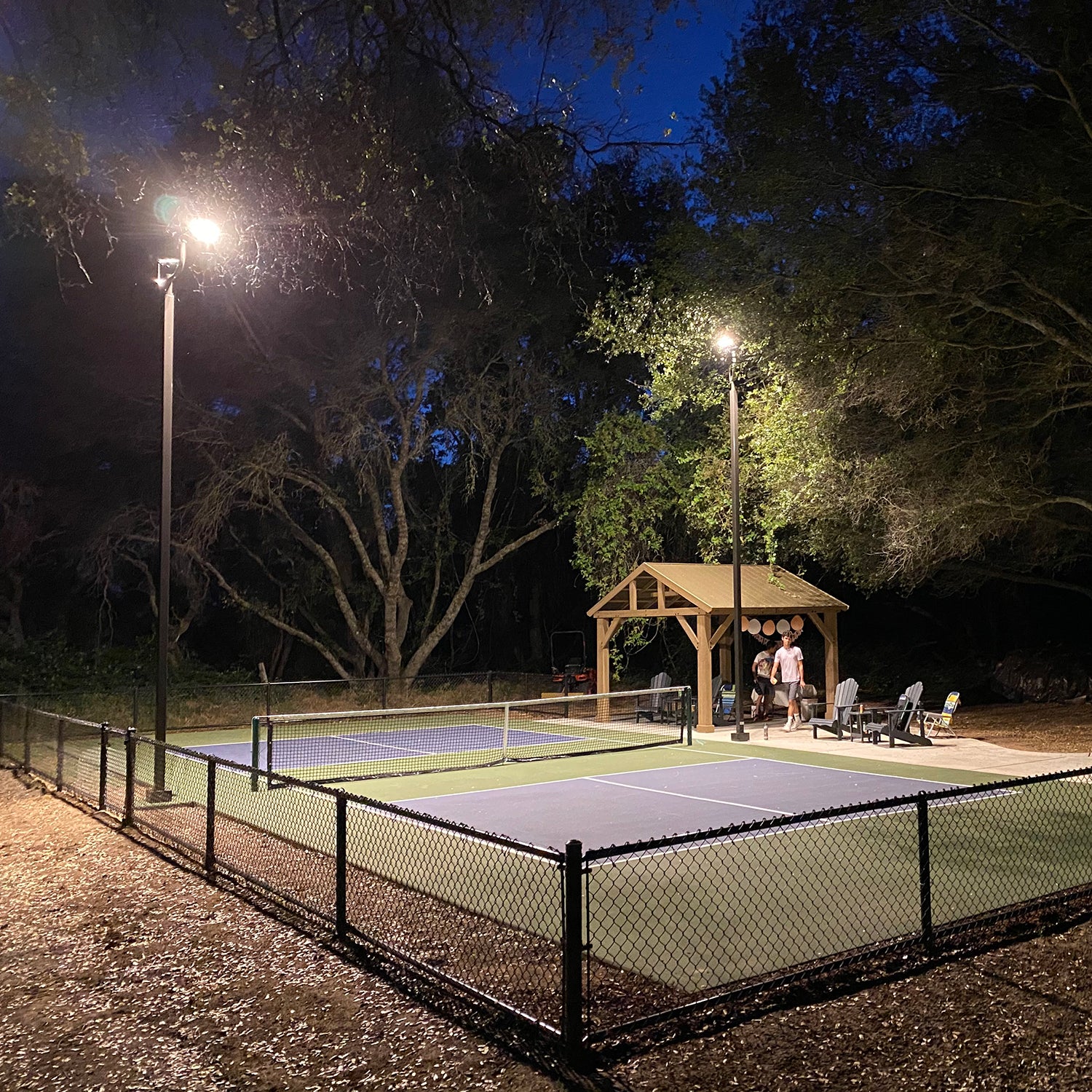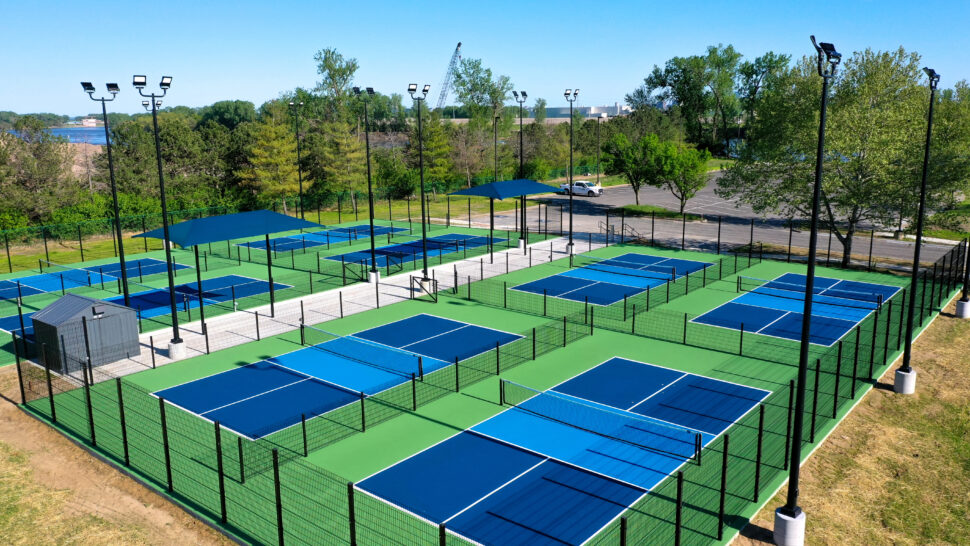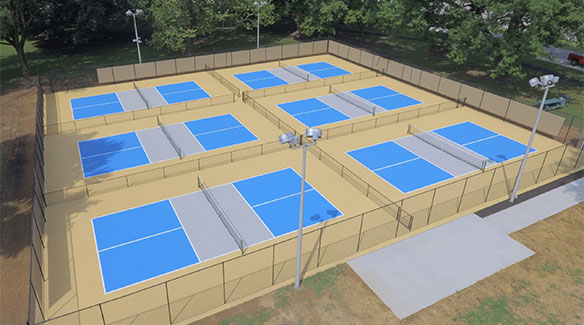Budgeting Tips for Affordable Pickleball Court Construction and Maintenance
Budgeting Tips for Affordable Pickleball Court Construction and Maintenance
Blog Article
Navigating Regulations for Pickleball Court Building And Construction in Your Location
Creating a pickleball court in your location calls for a nuanced understanding of various local regulations, consisting of zoning regulations, structure licenses, and safety requirements. Each district imposes specific standards that can dramatically impact the usefulness of your task. Engaging with neighborhood authorities and the area is crucial for making certain conformity and fostering assistance. Browsing this governing landscape can be taxing and complicated. What are the essential steps you should think about to avoid prospective challenges and ensure a smooth construction procedure?
Comprehending Local Zoning Legislations
When taking into consideration the construction of a pickleball court, comprehending local zoning regulations is essential to making sure conformity and avoiding prospective lawful issues. Zoning policies dictate just how land can be made use of and frequently consist of requirements relevant to recreational facilities. These legislations can differ considerably by district, impacting factors such as court positioning, noise, size, and lighting degrees.
Before starting building, it is necessary to seek advice from the regional zoning board or planning department to establish the details laws that put on your home. Specific areas might restrict recreational tasks, while others might require certain licenses or adherence to certain standards. It is additionally crucial to think about obstacles, which determine just how far structures should be from residential or commercial property lines or other structures.
Additionally, personal developments, such as homeowner associations (HOAs), may enforce their own rules pertaining to the construction and usage of pickleball courts. Comprehending these regulations can protect against costly modifications or lawsuits down the line. Engaging with neighborhood stakeholders and neighborhood participants can offer valuable understandings and foster support for your task, making certain that it lines up with the community's expectations and demands.
Getting Necessary Structure Permits
Just how does one browse the complexities of acquiring required structure licenses for a pickleball court? Commonly, you will certainly require to submit a comprehensive site strategy that describes the suggested court measurements, products, and layout.

Once licenses are acquired, it is crucial to stick to any type of evaluation routines and demands throughout the building and construction phase. Maintaining communication with local authorities will facilitate a smoother authorization procedure and aid stay clear of prospective troubles. By thoroughly preparing and recognizing the allowing landscape, you can efficiently browse the complexities included in building a pickleball court while staying certified with all local guidelines.

Assessing Environmental Influence
A comprehensive assessment of environmental impact is important when planning the building of a pickleball court. This assessment aids recognize potential impacts on local communities, water resources, and community looks. Trick factors to take into consideration consist of site selection-- guaranteeing that the court is not improved environmentally sensitive land, such as wetlands or habitats for jeopardized varieties
Soil stability and drain patterns should be examined to avoid erosion and water merging, which can negatively influence bordering vegetation and wild animals. Additionally, the option of products is critical; choosing lasting and environmentally friendly options minimizes ecological damage.
The application of effective stormwater administration techniques is one more important aspect, as it helps minimize overflow and sedimentation. Involving with local ecological companies can give important insights right into guidelines and best techniques details to your location.
Finally, area input can be valuable in comprehending any kind of local ecological concerns and promoting support Go Here for the job. By carrying out a thorough environmental impact assessment, stakeholders can ensure that pickleball court building lines up with sustainable methods and adds positively to the area's environmental wellness.
Abiding With Safety Standards
Guaranteeing conformity with security standards is essential for the successful construction and operation of a pickleball court. Abiding by well-known safety and security guidelines decreases the danger of injuries and mishaps, guaranteeing a secure setting for gamers.
Trick safety requirements consist of appropriate court dimensions, surface materials, and lights needs. The court should fulfill the official measurements of 20 feet broad by 44 feet long for increases play, with ideal buffer zones to avoid injuries from errant rounds. Pickleball court construction. The surface must be created from non-slip materials to improve traction and lower the probability of falls
Furthermore, lights needs to suffice for evening play, supplying consistent lighting to avoid darkness that can impede exposure. Neighborhood structure codes may also dictate particular requirements for fencing and web elevation to make certain player safety and security and protect against unapproved accessibility to the court area.
Normal assessments and upkeep are vital to copyright these requirements gradually. By this link focusing on safety and security conformity, court owners not just protect gamers but additionally promote a positive reputation within the community. This dedication to safety can urge greater participation and satisfaction of the sport, inevitably adding to its development and sustainability.

Engaging the Neighborhood in Preparation
Area participation in the planning phases of pickleball court building can dramatically boost the job's total success. Involving regional residents and stakeholders promotes a feeling of ownership and motivates collaborative decision-making, which can result in wider assistance for the campaign.
To successfully involve the neighborhood, organizers need to initiate public meetings or workshops, giving a platform for locals to voice their viewpoints and preferences pertaining to location, style, and amenities. Studies and feedback types can also be made use of to gather insights from a bigger audience, guaranteeing that varied point of views are considered.
Additionally, developing an area board of advisers can assist in continuous conversations and address issues throughout the preparation procedure. This board can consist of agents from different demographics, such as local colleges, recreational organizations, and neighborhood watch, thus intensifying area representation.
Efficient communication is crucial; updates regarding the project should be routinely shared via newsletters, social media, or neighborhood notices. By focusing on neighborhood interaction, planners can grow interest, mitigate possible resistance, and develop a pickleball center that absolutely resonates with regional worths and needs. This collaborative approach not only enriches the job yet also strengthens community connections.
Conclusion
In conclusion, browsing the intricacies of pickleball court building and construction demands an extensive understanding of neighborhood laws, consisting of zoning regulations, structure licenses, and security standards. Carrying out ecological evaluations is necessary to mitigate environmental impact, while area engagement can enhance official source support for such tasks. By sticking to these standards and cultivating collaboration, successful execution of pickleball courts can be achieved, advertising leisure chances and community wellness. Proceeded persistance in these areas will ensure compliant and sustainable advancement.
Creating a pickleball court in your location calls for a nuanced understanding of various local policies, consisting of zoning laws, building permits, and safety standards.When thinking about the building and construction of a pickleball court, understanding local zoning laws is important to making sure conformity and avoiding potential legal issues. By extensively preparing and recognizing the allowing landscape, you can efficiently browse the intricacies included in constructing a pickleball court while staying compliant with all local regulations.
In conclusion, browsing the complexities of pickleball court construction necessitates a thorough understanding of neighborhood guidelines, consisting of zoning legislations, building authorizations, and security standards. By adhering to these guidelines and fostering cooperation, successful implementation of pickleball courts can be accomplished, promoting entertainment chances and community health.
Report this page